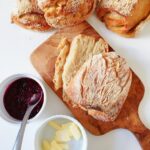
Ciabatta Bread Temptation is crunchy, chewy, and soft all at once. It is as rustic as it is refined. Yes, that is how it is supposed to be—a glorious seduction of texture with a rich flavor that is ultra-satisfying. Make it, taste it, and never forget it! You can serve this as a side dish with pasta, cheese, soup, and salad and it goes especially well with my Parmesan-spaghetti carbonara, Tomater med bøffelmozzarella, or Shrimp, Mango and Walnut Salad.
Dress it up at any meal or build a special sandwich with layers of cured meats, cheeses, and vegetables! You can go simple with a little dab of butter, sprinkle of salt, smear of cherry sauce, or sop of olive oil. Often you will just cut and eat it without a decoration of any kind—it is so damn good, as most temptations always are.

WHAT IS CIABATTA BREAD?
Ciabatta is an Italian bread made from wheat flour, water, olive oil, salt, and yeast. It originated in Verona in 1982, yet it seems to reach back to the time of Verona’s most famous lovers, Romeo and Juliet—a fact that led me to name it Ciabatta Bread Temptation! Today, Ciabatta Bread is made in many ways and is among the most popular bread everywhere.
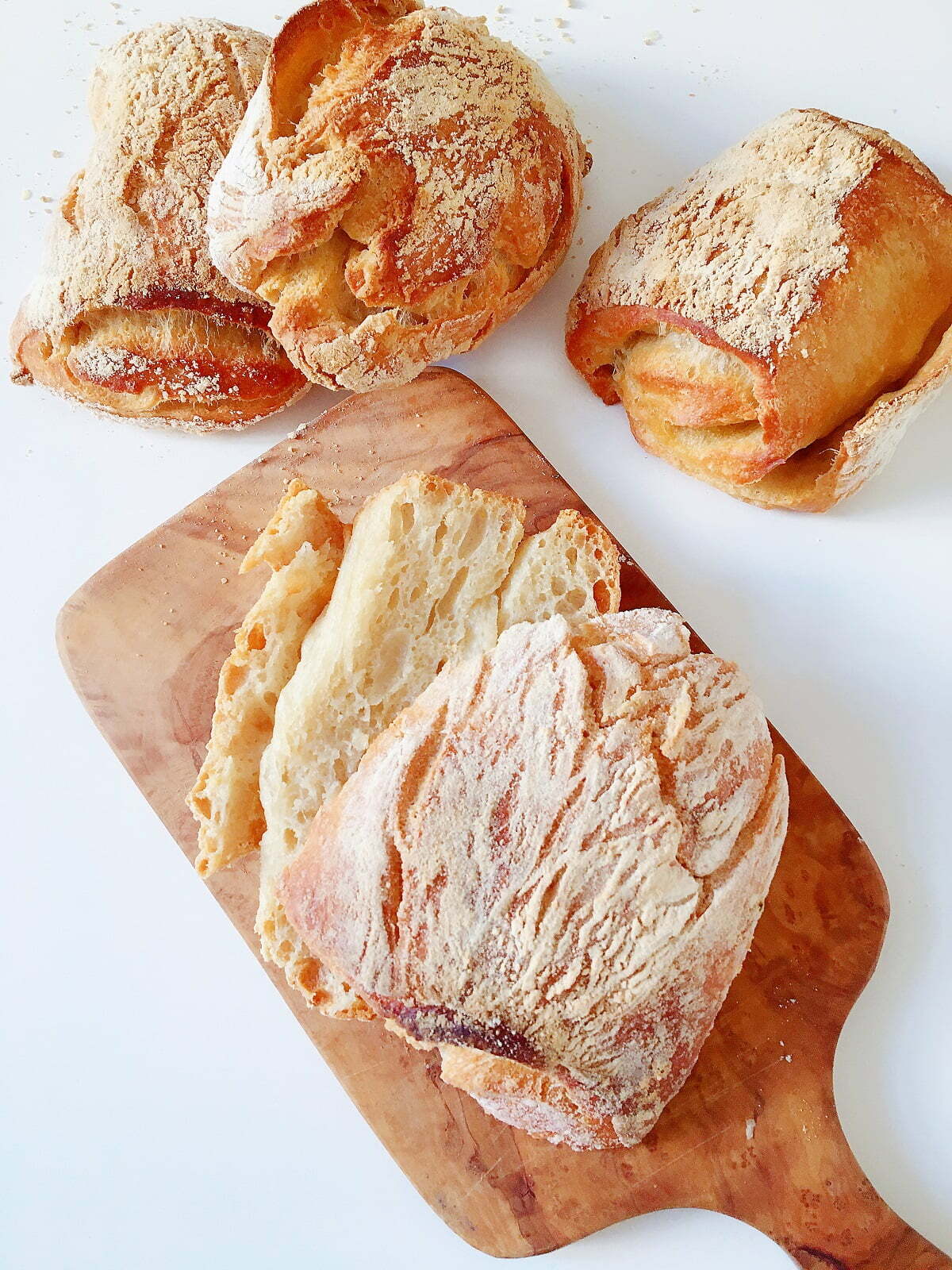
HOW TO MAKE THIS CIABATTA?
The ingredients for Ciabatta Bread Temptation are really easy to find. You need only wheat flour, salt, water, and olive oil! The method is a little more complicated and maybe scary for the beginner, but you will soon learn to learn to persuade this wet-and-sticky dough into a willing accomplice. Its tender softness transforms into a splendid hard crust that is a yin and yang of baking.
The most important things you need for making this bread are time and patience! I want to capitalize this–Time and Patience. Trust me, once you’ve made it, you will be so happy with the result. It tastes as beautiful as it looks.
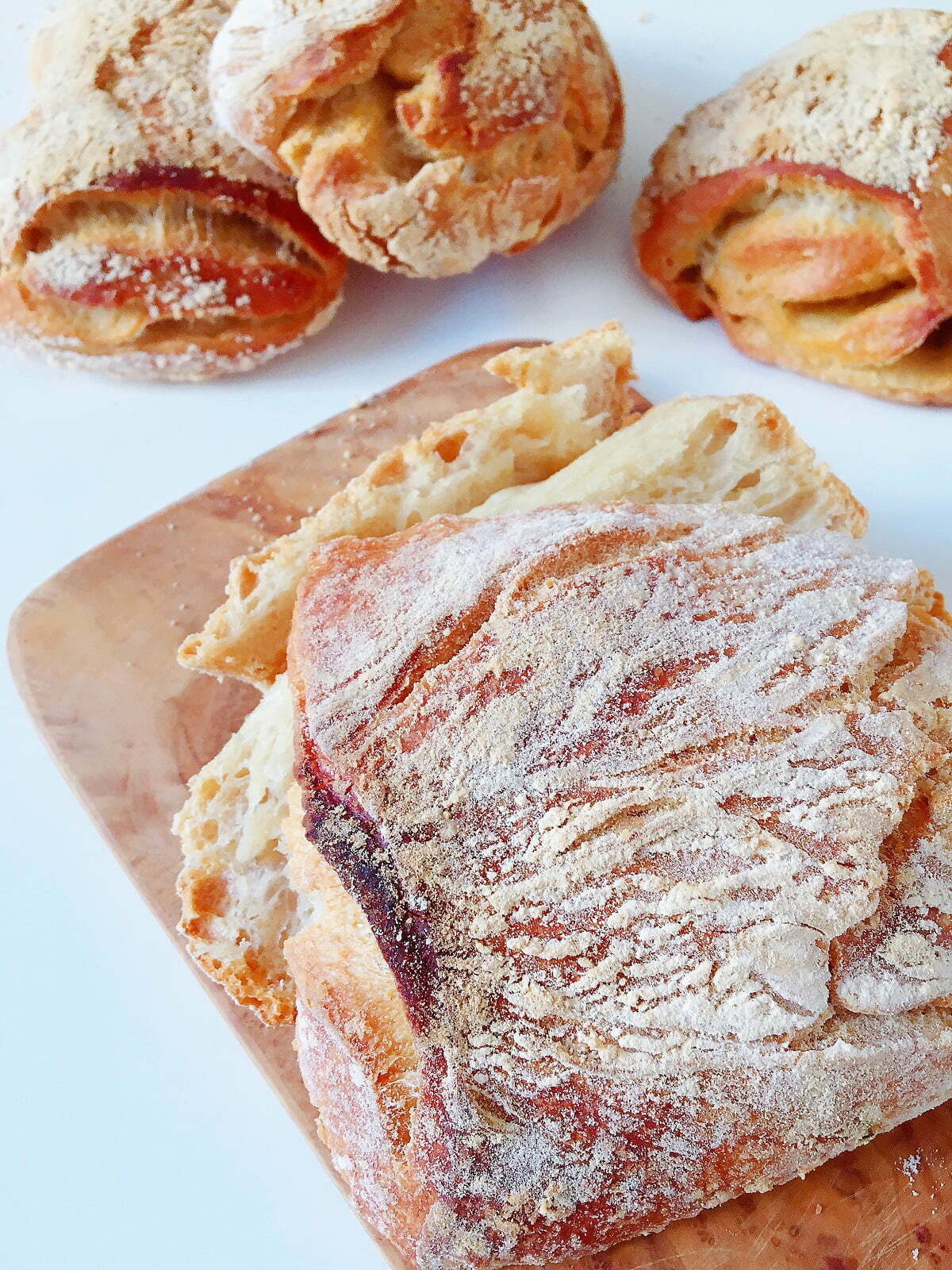
When cool enough to handle, you can cut the rolls in half horizontally and use for sandwiches, or dinner bread, as an appetizer for dipping into olive oil, or as an unadorned treat on its own merits. You will enjoy the strong, decadent crunching sounds and the impeccable reminders of Verona and her star-crossed lovers. Ciabatta-brødets fristelse is an experience located deep in our memories and available in your own kitchen!
*Særlig tak til min kæreste for at hjælpe mig med denne opskrift.
FLERE BRØDOPSKRIFTER:
Skinnende japanske mælkeruller uden besvær
Biskop Absalons Deluxe danske nøddebrød
Krydret femstjernet sesam-hvidløgsbrød
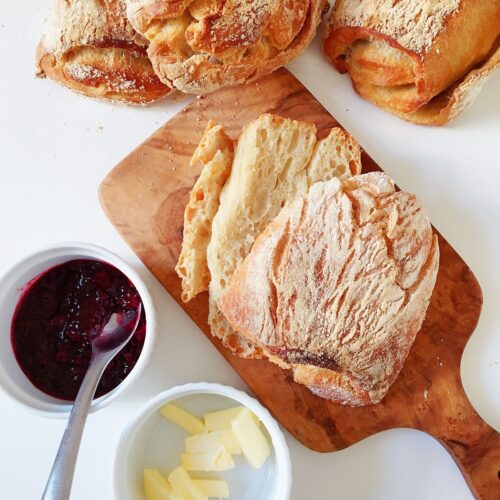
Ciabatta-brødets fristelse
Ingredienser
Dej
- 500 g / 17.6 oz Wheat Flour for Bread (sometimes called Strong, or Force Flour)
- 400 ml / 1.7 cups Cold Water
- 15 g / 3 tsp Sea Salt
- 20 g / 0.7 oz Fresh Yeast (also called Baker’s Yeast), or 7 grams Dry Yeast
- 30 g / 2.5 tbsp Olive Oil
Dusting
- 200 g / 7 oz Wheat Flour for countertop and dusting
Sådan gør du
- In a large mixing bowl, pour in the Wheat Flour and crumble the Yeast into the flour. Add the Cold Water and mix thoroughly with a rubber spatula into a sticky dough, about 5 minutes.

- Grease a clean bowl with one-third of the Olive Oil, about 10 grams. Add the dough evenly and cover with plastic wrap. Set aside until it doubles in size, about 3 hours.
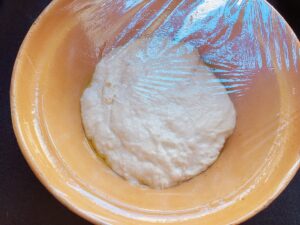
- Add the Sea Salt and mix thoroughly, which reduces the size to half. Cover the bowl and set aside for 2 hours.

- Pour the mixture into a well-greased 20 x 35 cm oven pan. Push down and spread evenly with a rubber spatula. Cover with a matching size pan or plastic wraps. Set aside until it doubles in size, about 4 hours.
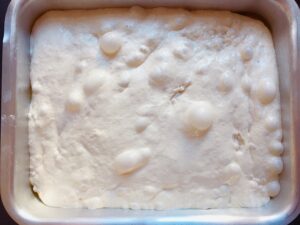
- Dust your countertop with a good handful of flour. Pour the very sticky dough onto the flour. Without kneading, spread the wet dough gently until it forms a large rectangle, about 25 x 30 cm, and about 2 cm thick.
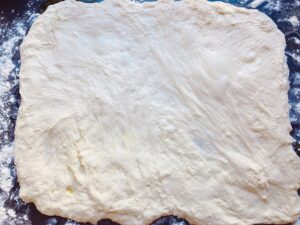
- Cut the rectangle into halves. Taking one half, fold one-fourth of the dough gently over onto itself. Brush Olive Oil on top of the folded dough. Gently fold again. Brush on oil. Fold again. Dust the folded roll on both sides with a generous amount of flour. Tuck the ends of the roll underneath to make a nice oblong shape (30 cm long). Repeat the same for the other half of the dough mixture. Let the two loaves rest on the countertop for 45 to 60 minutes.
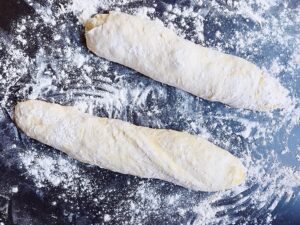
- 15 minutes before the loaves are finished resting, turn the oven to maximum power (250 C/ 480 F) and place a medium pan full of water on the bottom rack. Meanwhile, use a metal dough cutter/spatula dipped in flour to cut the loaves into thirds. Place the pieces upside down and one inch apart onto a slightly greased (or onto a sheet of baking paper) baking pan. Note: the tops of the pieces should have a generous dusting of flour.
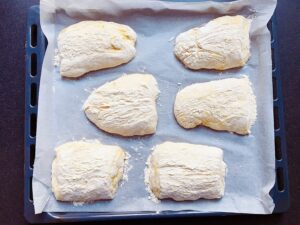
- Turn the oven down to 220 C (425 F). Be careful of the steam when opening the oven door! Place the pan with bread on the middle rack and cook and steam for 15 minutes. Carefully take the very hot water out of the oven. Continue to bake the bread at 220 C / 425 F) for 20 more minutes until the bread is golden brown and very crusty. It should be hard when touched. Remove from pan and set rolls on a rack to cool.
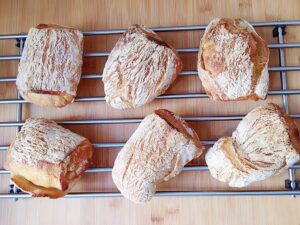
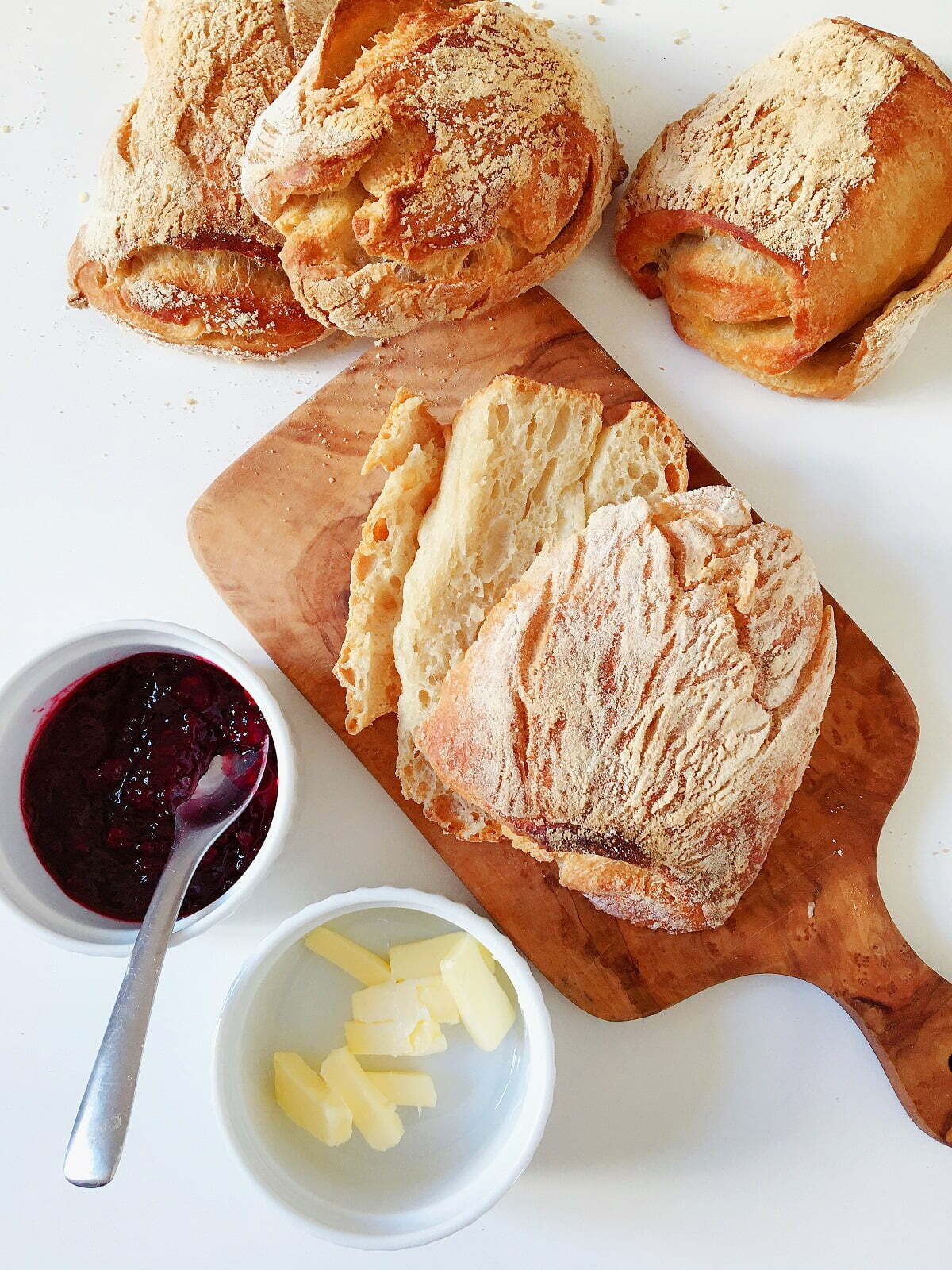
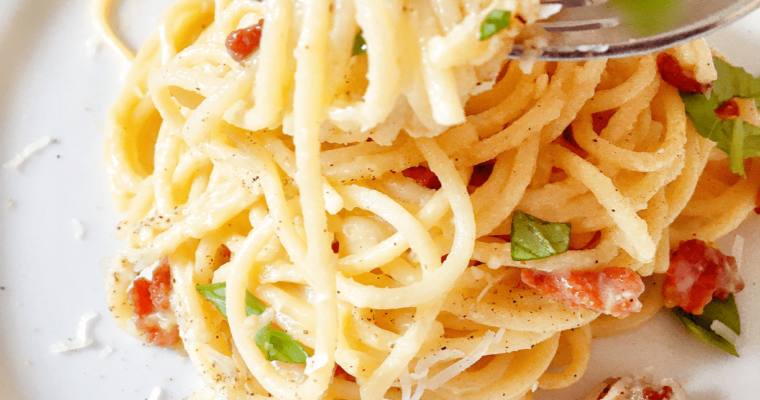
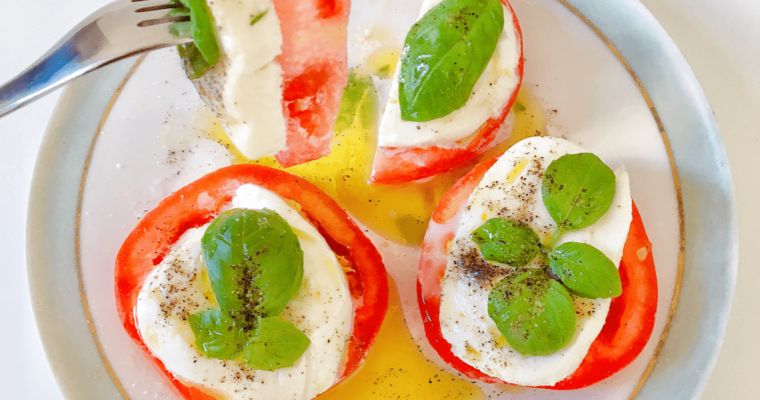


It’s been a long time I actually pulled out a piece of paper to take notes on a blog post. Thanks for this. You’ve earned yourself a new reader!
Hi Brian, thanks so much for stopping by and I really appreciate that you spent time reading my post. I am glad to hear that you have become a reader on my food blog and I hope to see you more often! Have a great one!